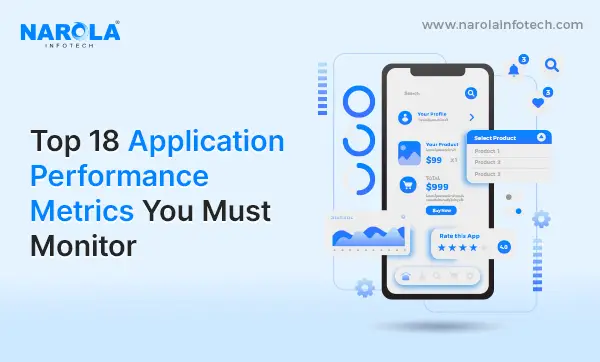An effective tool that can propel your company to new heights is a mobile application. But it sometimes feels like navigating a maze trying to figure out what makes an app succeed.
Is it the eye-catching images? The clever characteristics? The state-of-the-art technology? While all of these factors are important, application performance metrics are frequently the secret sauce that makes all the difference.
These quantitative and qualitative metrics provide priceless information about how users interact with your app, how well it converts them, and ultimately how profitable it is.
For this reason, we have put together this extensive blog post that goes over the crucial mobile app metrics in great detail. You will be able to keep an eye on and enhance your app's performance with their assistance.
Six Common Application Performance Measures for Decisions Driven by Data
Downloads
Although a large number of downloads indicates app popularity and may lead to awareness creation, the user journey doesn't end there. Further data analysis is essential to fully comprehend user acquisition and optimize your marketing strategy.
You can learn more about how users are finding your app by analyzing download trends from a variety of sources, including social media campaigns, influencer partnerships, app store searches, and other marketing initiatives.
With the help of this data, you can determine which marketing channels are most successful, adjust your strategy accordingly, and enhance app store optimization for increased discoverability and visibility.
Installs: The quantity of active installations gives a more accurate picture of user retention than downloads, which only indicate initial interest. This metric shows how many downloaded apps are being installed and used, which gives a clearer picture of user retention. By examining the decline in downloads and installs, you can identify particular junctures in the user journey where friction appears.
This could be the result of a difficult onboarding procedure, a laborious installation process, or a weak initial value proposition. You can make focused changes to expedite the installation procedure, make onboarding easier, and improve the first user experience by identifying these friction points. In the end, this will result in more engaged users and higher retention rates.
Removes
A high rate of uninstalls serves as a warning sign for unhappy users or unfulfilled expectations. You can learn important information about the reasons behind app abandonment by keeping a close eye on uninstall trends and analyzing them in conjunction with user activity data.
Determine which features or functionalities are associated with uninstall spikes.
Are users having trouble using a specific feature?
Do they lack essential functionality?
Is there enough value in the app for them to stay interested?
Through identification of these issues and implementation of fixes, upgrades, or new features, you can reduce the number of uninstalls, raise user satisfaction, and cultivate a devoted user base.
Users in Action
The “Active Users” category distinguishes between users who only downloaded the app and those who actively used it, offering a more thorough understanding of user engagement.
You need to monitor the Daily Active Users (DAU) and Monthly Active Users (MAU) mobile app performance metrics. You will obtain important information about how often people use your app and how many active users you have.
By tracking these metrics over time, you can determine general trends in user engagement, spot possible seasonal variations, and gauge how particular events or marketing campaigns affect user behavior. This data is essential for improving the user experience, customizing features and content according to user behavior, and encouraging greater app engagement.
Session Length: The length of a session indicates the level of user engagement and the amount of time users spend using your app actively during a session. An extended session duration is a good sign, indicating increased user satisfaction and a deeper level of user immersion with the app.
On the other hand, a brief session might indicate problems with the app's usability, a dearth of interesting content, or navigation issues. You can identify particular sections of the app where users become disinterested and disengaged by combining session length analysis with other user behavior data.
To promote longer and more satisfying user sessions, you can use this to address usability issues, optimize content delivery, and enhance important features. As a result, you can improve user satisfaction and raise engagement.
Depth of Session
By disclosing the number of screens or pages users view during a session, session depth provides additional insight into user engagement. Higher session depths are indicative of a more exploratory user journey, where users interact with and navigate through different app functionalities. This points to a more engaged user base and a satisfying exploration process.
A low session depth could indicate a deficiency of interesting content in the app or restricted user exploration. By monitoring this metric, you can pinpoint particular features or content that appeal to users the most. You can then prioritize content development, enhance feature discoverability, and tailor the user experience to encourage more in-depth investigation and interaction.







